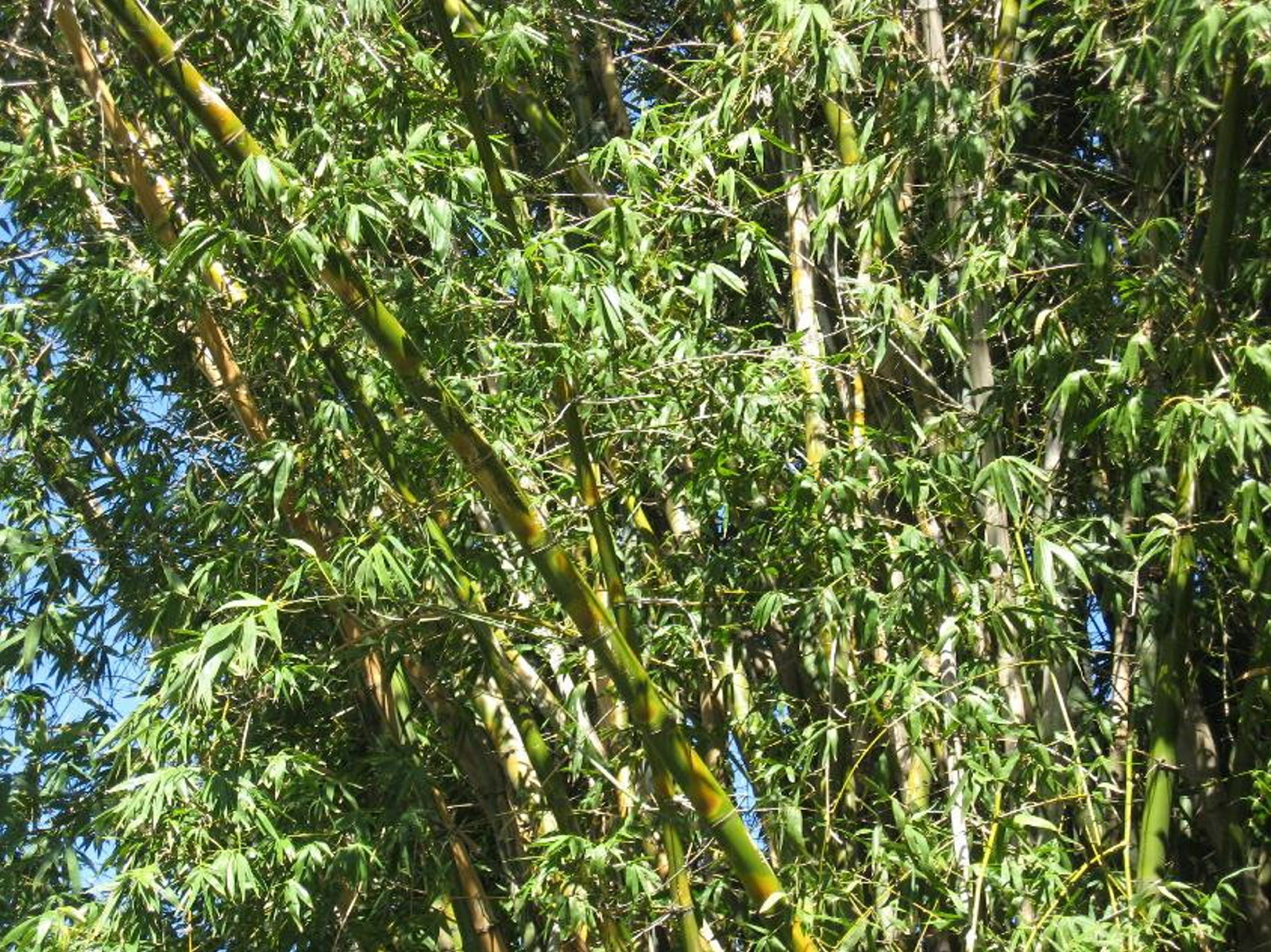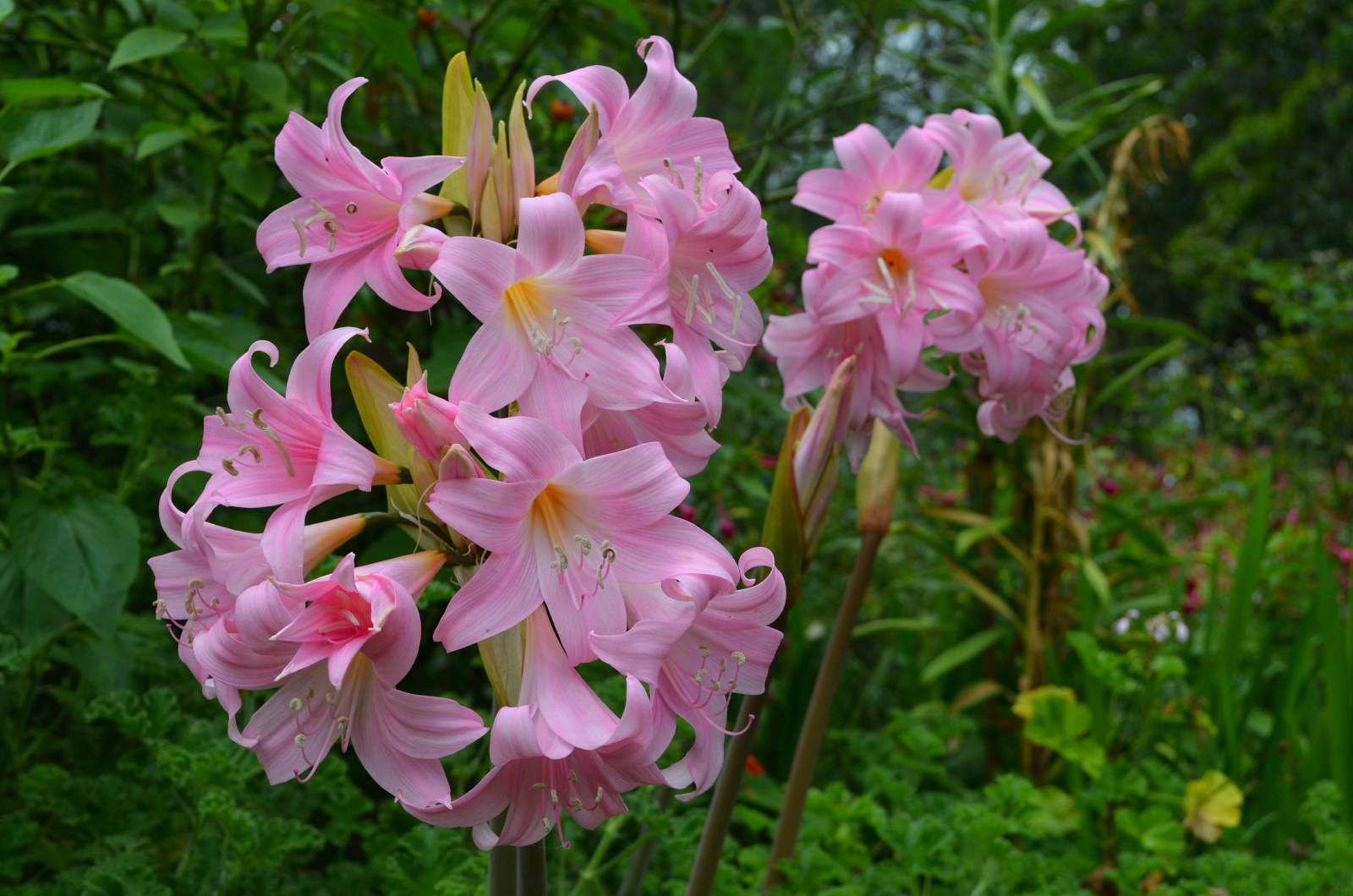Aloe arborescens ‘candelabra aloe’
Tours at Elizabeth Farm often start alongside a large bed of succulents, dominated by towering cactus. It can be quite a surprise for visitors to discover that colonial gardens contained such a wide variety of plants, including aloes from South Africa, agaves (Agave attenuata and A. americana) and yuccas (the fiercely spined Yucca gloriosa or ‘Spanish daggers’) from Central America.
Every winter these tall aloes (Aloe arborescens, a relative of the familiar but low-growing Aloe vera, A. barbadensis) produce wonderful displays of orange-red flowers, their distinctive branched display earning them the name ‘candelabra aloe’. They’re one of many South African plants in the Elizabeth Farm garden, such as pots of bulbs - ixias, sparaxis, and bright blue babiana flowers - that open in late Spring, while in late Summer dense clumps of crinum bulbs (The pink Belladonna Lily or ‘Naked Lady’, Amaryllis belladonna) explode into colour.
Tough, fast-growing and drought tolerant, and easy to grow from a cutting, the candelabra aloe is a striking sculptural form in a garden even when not in flower. Frost sensitive, it enjoys full sun, and a rich but free-draining soil. These winter flowering aloes will be in flower at Elizabeth Farm for another few weeks, with even the spent infloresence remaining quite distinctive.
lizabeth [Jnr.] interests herself about the garden – but really we have had such a succession of untoward seasons that she had almost given it up – she has a fine collection of bulbs from the Cape, in addition to those that you brought, the Archdeacon [Thomas Hobbes Scott, who rented Hambledon] had a great variety which he had planted at the cottage, some of them still remained there and a great portion have been removed into our garden – amongst these is the celebrated Amaryllis Josephine – it bloomed last season in great perfection together with many others equally beautiful, and extraordinary.
Elizabeth to Edward Macarthur. Written at Parramatta, May 31, 1828 ML A2906.
Published on
Plant your history
Browse all
Plant your history
Beautiful bountiful bamboo
One of the most recognisable plants growing at Museums of History NSW today is bamboo. This colourful plant has a long history in colonial gardens

In the pink at Elizabeth Farm
Amid the late summer bounty in the garden at Elizabeth Farm, the crepe myrtle is the undoubted star of the show

Plant your history
Sumptuous cape bulbs light up late summer gardens
Belladonna Lilies and Crinum Lilies are tough bulbs that never say die and can survive years of neglect

Plant your history
Acanthus - an apt symbol for The Mint
Look at any classical building today, anywhere in the world and chances are you will find an acanthus leaf lurking somewhere
